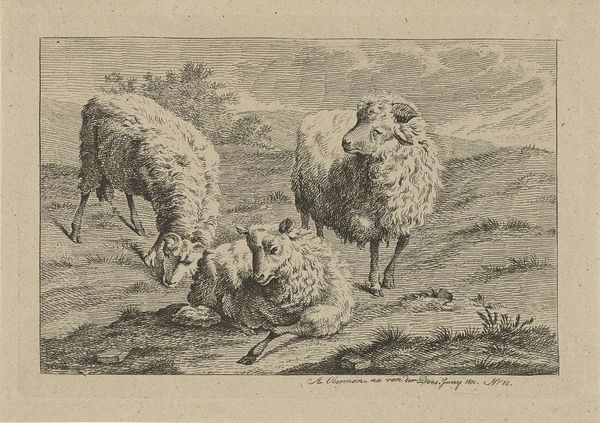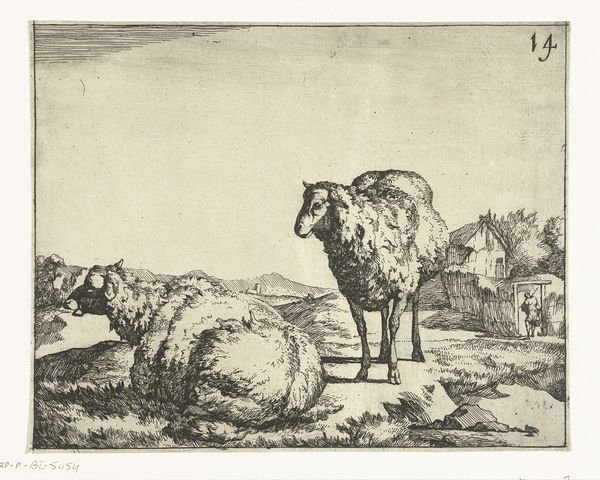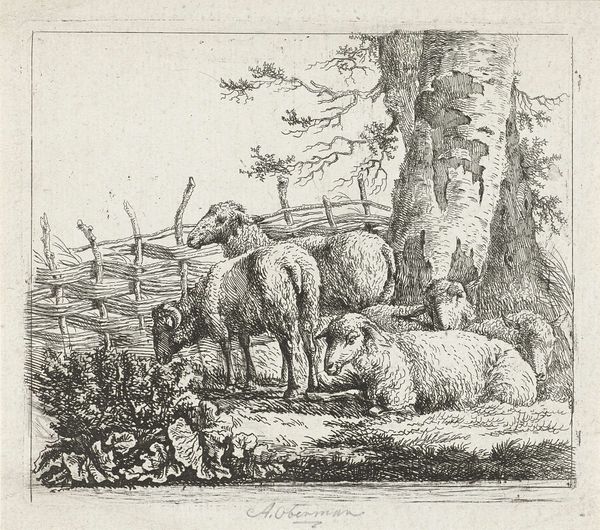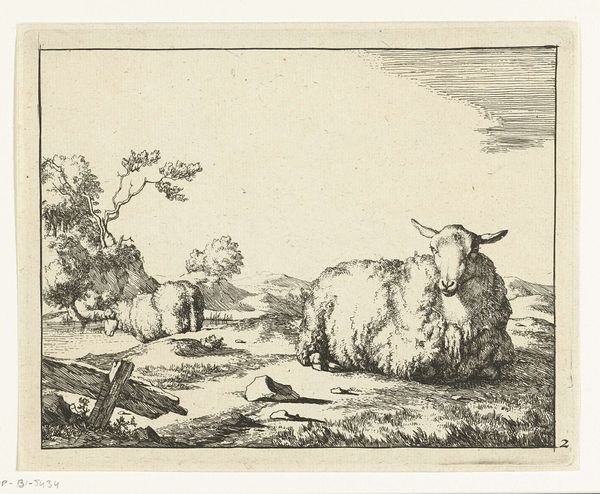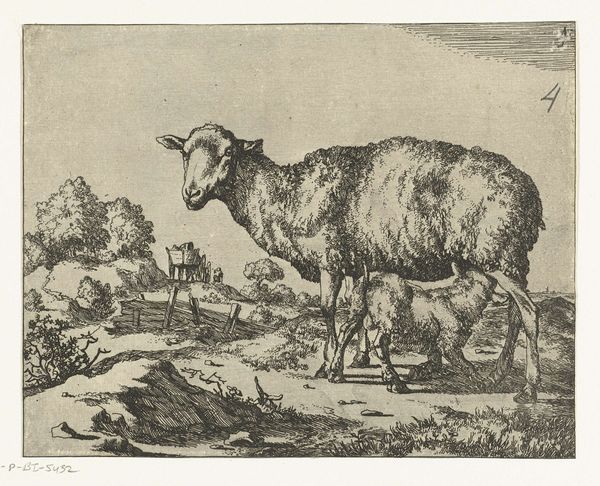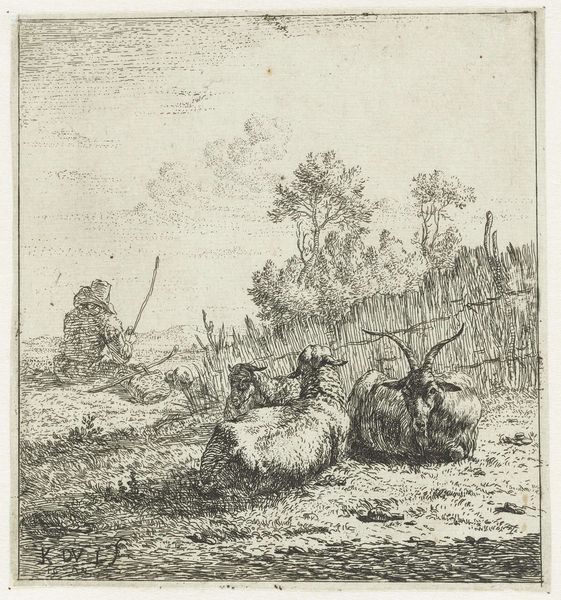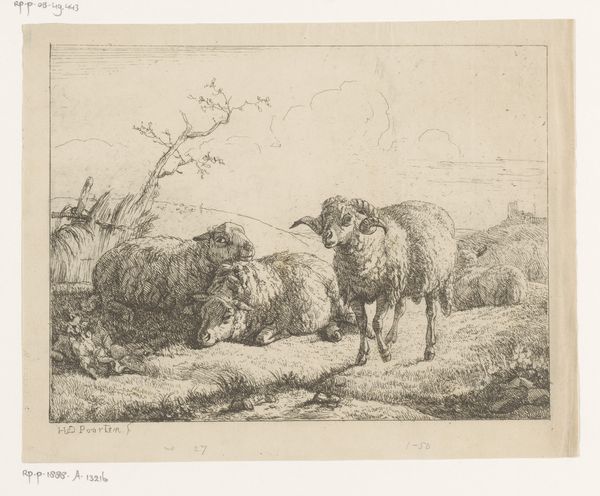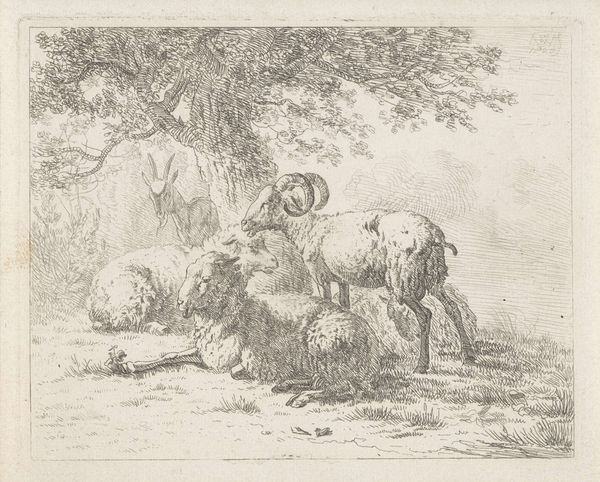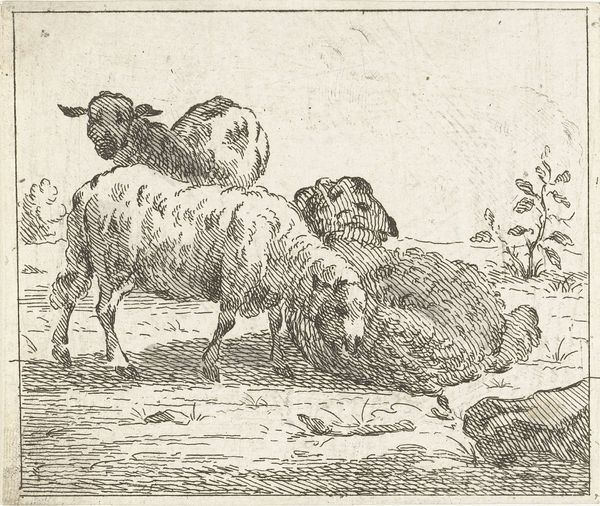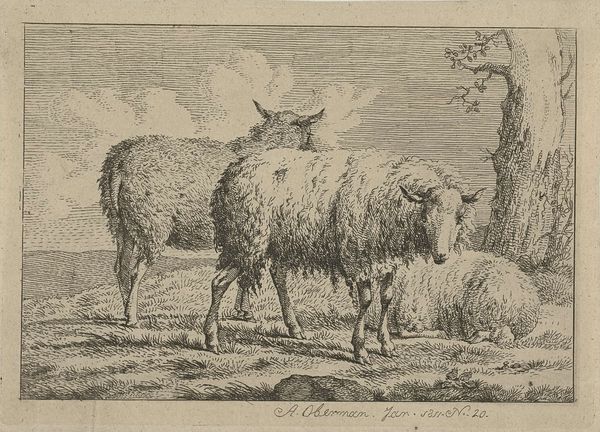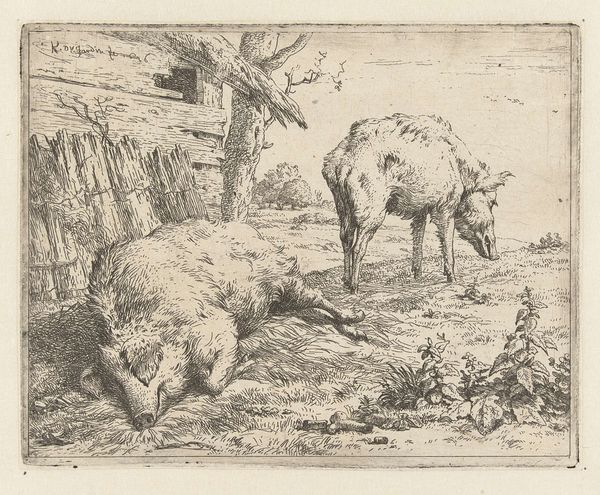
#
landscape illustration sketch
#
mechanical pen drawing
#
pen illustration
#
pen sketch
#
pencil sketch
#
personal sketchbook
#
ink drawing experimentation
#
pen-ink sketch
#
pen work
#
sketchbook drawing
Dimensions: width 141 mm, height 94 mm
Copyright: Rijks Museum: Open Domain
Curator: Look at this charming drawing, "Two Sheep and a Goat" by Barend Graat, made before 1652. Editor: It's interesting. A rural idyll perhaps? The texture in the sheep's wool almost vibrates—the effect is kind of stunning given the simplicity of the materials. Curator: I find myself wondering about the position of these animals, their social context, or the status they embody within the landscape. Considering seventeenth-century Dutch art, are we looking at the representation of wealth? Editor: Well, given that Graat was also a painter and these seem more like working drawings done with a pen—quick studies— it’s likely the livestock are subjects the artist used for developing a different kind of formal project. What about labor practices relating to sheep raising? Curator: Precisely, that relationship is key, because we’re never looking at the animals divorced from their material and social place within a Dutch, and patriarchal, society. Land ownership, textiles, the class structure…it's all right there, isn’t it? The question then is not simply ‘is this aesthetically pleasing,’ but ‘how is power and labor embedded in its representation?' Editor: Absolutely! These pastoral images often whitewash the intense labor surrounding animals, farming, textiles, not to mention the ecological context, but here you can really see the materiality of wool almost take on a presence of its own through the scratching of the pen, like the land itself coming through the animal. Curator: Exactly! And thinking about Graat's social position helps ground this observation: he was a contemporary to Rembrandt and may have seen himself as something of a counterpart when considering the human/animal relationship. Editor: Looking at how the cross-hatching defines the curves and contours, I find it difficult to avoid the conclusion that he wants to feel how these creatures move through the fields; a visceral and artistic interpretation. Curator: It also suggests that Graat likely viewed this landscape as an idealized projection, and not something that directly mirrors society. Editor: Ultimately, the making and the material speaks of work as much as the end products. Curator: Indeed. A piece like this reminds us to challenge our own preconceived notions around identity, especially those constructed for us, by a dominant society. Editor: Precisely, a work like this makes one look at a deeper cultural history within materiality, process and the lives lived by others.
Comments
No comments
Be the first to comment and join the conversation on the ultimate creative platform.
